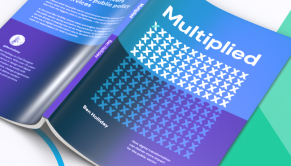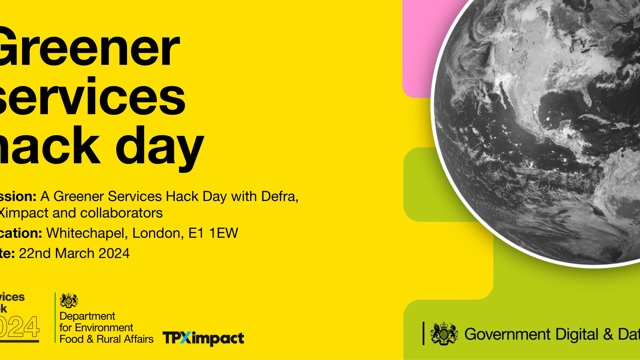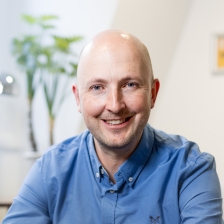When a piece of grit works its way into an oyster shell, it eventually forms a pearl. It challenges the natural order to produce something special and different and new.
This is what our organisations need now, as we harness the changes which started during the pandemic, and build the next generation of public services. We need teams that can apply new thinking to deliberately challenge and shape what happens next. We need a change in mindset so we can multiply the impact and value of our public services, so they can better deal with complexity, risk and uncertainty.
In short, we need a design mindset. And we need to create the right circumstances for that mindset to flourish, and for change to happen.
What is a design mindset?
In the 1970s, the consultancy firm IDEO began applying design principles to work processes, to help people work better together. Those principles — empathy, optimism, iteration, creative confidence and experimentation — make up a design mindset, which enables people to work better with complexity, reframe problems into solutions and explore new ideas and opportunities.
This mindset naturally involves a bias towards action. It’s a belief that we can always achieve more by taking a decisive step forward. And its goal, ultimately, is to create products and services more closely aligned to people’s needs and expectations.
Combined with a test and learn approach, a design mindset is the best way to deliver better services and solutions and manage the risk and uncertainty that dominates our world today. So, how do organisations develop one?
Start and end with the user
As the goal of a design mindset is to base products and services more around the user, that user has to be front and centre of all business and delivery decisions. Organisations need to devote time and space to working closely with those people and communities impacted by the service, on an ongoing basis.
If the public sector doesn’t do this, services could end up being based around top down assumptions rather than reality.
For an example of this, we can look to what happened with the overspent, delayed transport controversy that is HS2, the high speed railway project linking London to the Midlands and the North.
The project’s multi-billion pound business case was based around the initial, incorrect assumption that passengers don’t work whilst on the train. This made the forecasted time savings for journeys on the new line look much more valuable than they really were. Rather than invest in a new railway network, simply upgrading the wifi on existing train services could have been a better option, boosting productivity without the huge cost of HS2.
User centred research and data, applied at an early stage, could have uncovered key insights such as these, saving time and billions of pounds of investment.
Tackle complexity with simplicity
With a design mindset, simplicity and complexity are not necessarily opposites. Even when the task at hand is complex, simplicity can guide its delivery. This means removing processes, content and user interactions that are confusing or unnecessary, and designing more intuitive, joined up experiences.
As the German industrial designer Dieter Rams advises, this focuses on “less, but better”. It’s also enshrined in one of the ten UK Government Design Principles: “Do the hard work to make it simple”.
A great example of this principle in practice is the Department for Work and Pensions simplifying the application process for Carer’s Allowance, removing 49% of questions from the submission form and creating a more efficient, simpler service.
Imagine starting requirements are wrong
Applying a design mindset means challenging underlying assumptions and tackling opposing ideas. Asking questions throughout the task is crucial to this, as it helps to ensure the work meets the right goals.
We can ask questions like:
- How would we design this if we started again today?
- Why are we doing this work?
- Who are our users?
- What outcome are users looking for? And what outcome does the organisation need?
- What does success look like? What are the key metrics to measure this?
If this attitude of constructive challenge isn’t adopted, teams can easily find themselves putting all their efforts into a task which is actually taking them away from what they are trying to achieve.
Having the confidence to ask such challenging questions naturally helps organisations develop new attitudes to risk and uncertainty. It helps them understand that they don’t need to have all the answers before they start, but to keep moving anyway. And it helps them develop an agile approach to manage the unknown, making incremental changes to the project along the way, like a controlled experiment.
It’s the most efficient way to test new ideas and to gradually increase their scale and complexity.
Adopting design mindset approaches like these helps us question what is possible, develop bold ideas that challenge existing models of the world, and meet changing expectations for future services. It’s fundamental to how we build the kind of public sector we want to see, and gradually turn that grit into a pearl for our society.
Find out more about how the public sector can increase the value and impact of its services in our new book Multiplied, available to buy from Amazon and Waterstones. Multiplied explores the new and creative ways in which we can unlock the technology, data and design potential of the public sector, to do more for Britain’s communities.
All profits from the book are being donated to the Association of NHS Charities.

How far can we stretch your thinking?
Sign up for our fortnightly Multiplied series to learn moreOur recent insights

Developing greener services principles with DEFRA
Supporting Department for Environment, Food & Rural Affairs to define shared principles that enable all to embrace planet-centred thinking.
Read more
How local action can transform the UK's path to net zero
Discover the pivotal role of local authorities and communities in the fight against climate change
Read more
Empowering communities: the impact of citizens' assemblies
We spoke to Ellen Jennings, Senior Workstream Coordinator at Barnet Council’s Sustainability Team, about the importance of citizens' assemblies in helping to address the climate emergency.
Read more

